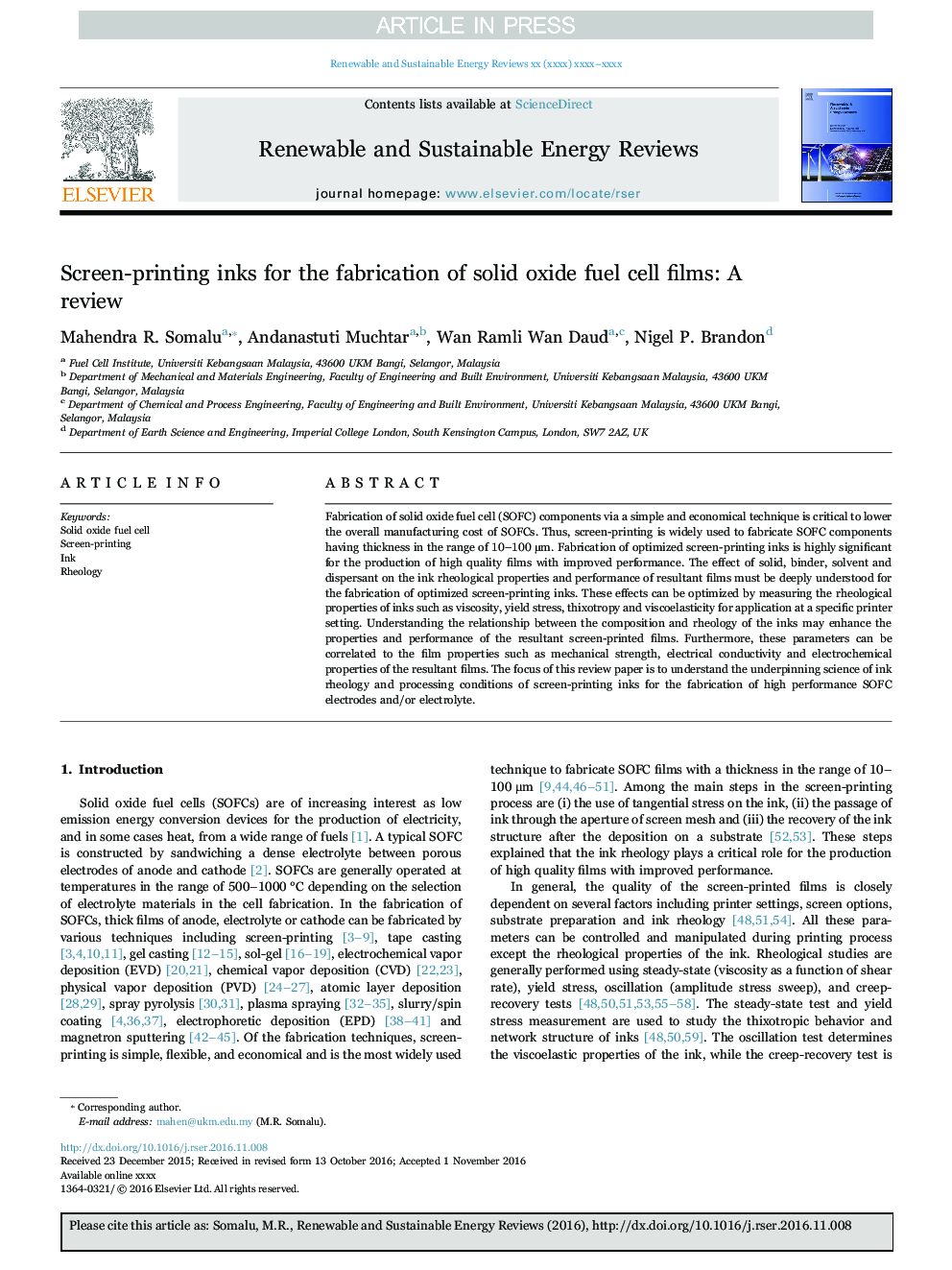| Article ID | Journal | Published Year | Pages | File Type |
|---|---|---|---|---|
| 5482850 | Renewable and Sustainable Energy Reviews | 2017 | 14 Pages |
Abstract
Fabrication of solid oxide fuel cell (SOFC) components via a simple and economical technique is critical to lower the overall manufacturing cost of SOFCs. Thus, screen-printing is widely used to fabricate SOFC components having thickness in the range of 10-100 µm. Fabrication of optimized screen-printing inks is highly significant for the production of high quality films with improved performance. The effect of solid, binder, solvent and dispersant on the ink rheological properties and performance of resultant films must be deeply understood for the fabrication of optimized screen-printing inks. These effects can be optimized by measuring the rheological properties of inks such as viscosity, yield stress, thixotropy and viscoelasticity for application at a specific printer setting. Understanding the relationship between the composition and rheology of the inks may enhance the properties and performance of the resultant screen-printed films. Furthermore, these parameters can be correlated to the film properties such as mechanical strength, electrical conductivity and electrochemical properties of the resultant films. The focus of this review paper is to understand the underpinning science of ink rheology and processing conditions of screen-printing inks for the fabrication of high performance SOFC electrodes and/or electrolyte.
Related Topics
Physical Sciences and Engineering
Energy
Renewable Energy, Sustainability and the Environment
Authors
Mahendra R. Somalu, Andanastuti Muchtar, Wan Ramli Wan Daud, Nigel P. Brandon,
